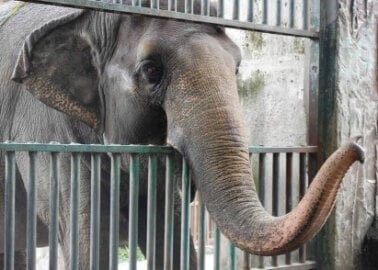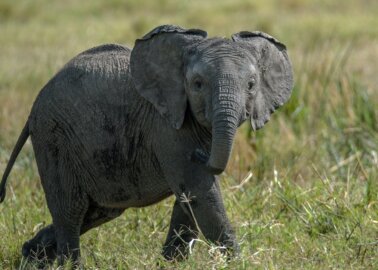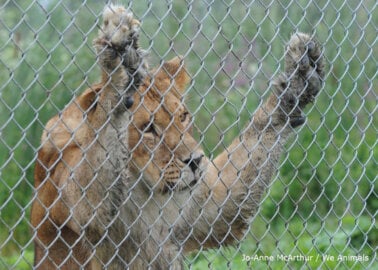COVID-19: An Opportunity for Animals Imprisoned in UK Zoos
As the coronavirus pandemic is affecting every corner of the UK, zoos are closed, giving the animals a temporary reprieve from the otherwise constant noise, torment, and anxiety that the paying public brings. Here’s why these animal prisons must be closed forever once the outbreak is over.

Imprisoned for Profit
Zoos are animal prisons – and they camouflage their cruelty with conservation claims. The vast majority of species kept in zoos aren’t threatened with extinction – and captive endangered animals are almost never introduced back into their native homes to boost dwindling wildlife populations. Worse still, less than 5% of zoos’ profits go towards efforts to conserve natural habitats.
In contrast, zoos spend extraordinary sums of money on captive-breeding programmes – in part because they know that tiger cubs and other babies will bring a surge of visitors hoping to catch a glimpse of them. Little do these visitors realise that once the animals are older and no longer deemed “cute”, they may well be torn away from their families and sent to another zoo or even killed to free up space for more babies.
Zoos’ main priority is not conservation or education but profit. They subject animals to an undignified, diminished existence for the pleasure of paying customers. But the animals are the ones paying the ultimate price.

Forced to Entertain
Zoos are private collections of animals who are confined, put on display for visitors, and often subjected to taunting and harassment. Many force animals to perform in shows, and some offer visitors the chance to interact with them – such as by feeding, riding, petting, or walking with them – even though wild animals instinctively avoid human contact.
Research shows that such interactions cause the animals stress and fear, resulting in abnormal behaviour patterns like pacing and high levels of cortisol in their faeces. These activities may even prompt members of the public to keep exotic animals as “pets”, perpetuating the cruel and damaging exotic-animal trade.
At Dartmoor Zoo, visitors can pay to take part in a “tug of war” with a lion or a tiger. In this grotesque spectacle – which shows a total lack of respect or care for the animals involved – the big cat tries to wrest a piece of meat from a group of adults for “fun”.

Trauma and an Early Death
Animals’ complex needs can never be met fully in captivity, and as a result, they commonly develop stereotypic behaviour patterns – engaging in repetitive acts in an attempt to cope with their mental anguish. Species that migrate, hibernate, or are nocturnal may be particularly badly affected by an artificial environment and a lack of space, displaying aggression or health issues as a result. In captivity, many animals die far short of their natural life expectancy – orcas can live to be 100 years old in their ocean homes, but most don’t reach even half this age in marine parks.
“Free-range” exhibits – where the public can feed and interact with the animals – have very few hiding places for animals to retreat to, so they also cause severe stress. Research suggests that an increase in visitor numbers causes the animals to behave more fearfully, such as by appearing vigilant or trying to hide.
Nearly one-fifth of all the animals at Borth Wild Animal Kingdom in Wales died in a single year. Some died after ingesting foreign objects, while others succumbed to chronic illnesses, and one was shot and killed after escaping. As a result of neglect and inadequate care at South Lakes Safari Zoo in Cumbria, nearly 500 animals died in just three years, many from trauma, exposure, or attacks by other animals.

Traded, Shipped in Small Cages, and Killed
Animals are often traded between facilities to increase visitor numbers. So many animals are bred for zoos that those who are deemed to be surplus to requirements may be sold to wildlife dealers and may end up being killed so that their flesh or skin can be used for traditional Chinese medicine, food, or fashion.
Those who are killed on site may be fed to other animals or dissected in front of a paying audience. Even though zoos breed more animals than they can house, animals are still taken from their native environment to bolster the exhibits.

It’s simple: no wild animal would choose life in a cage. No wild animal would willingly perform for the public. No wild animal wants you to touch or take a photo with them. Animals are not ours to use for entertainment.
What You Can Do
Now that we’re all experiencing some of the stress of confinement, it’s easier than ever to empathise with animals who are trapped for their whole miserable lives.
When our quarantine is over, we must work towards granting animals in zoos their freedom by phasing out these facilities. Help us spread the word about the suffering of animals incarcerated in zoos and marine parks – share this blog with your friends and family and encourage them never to support animal prisons:



